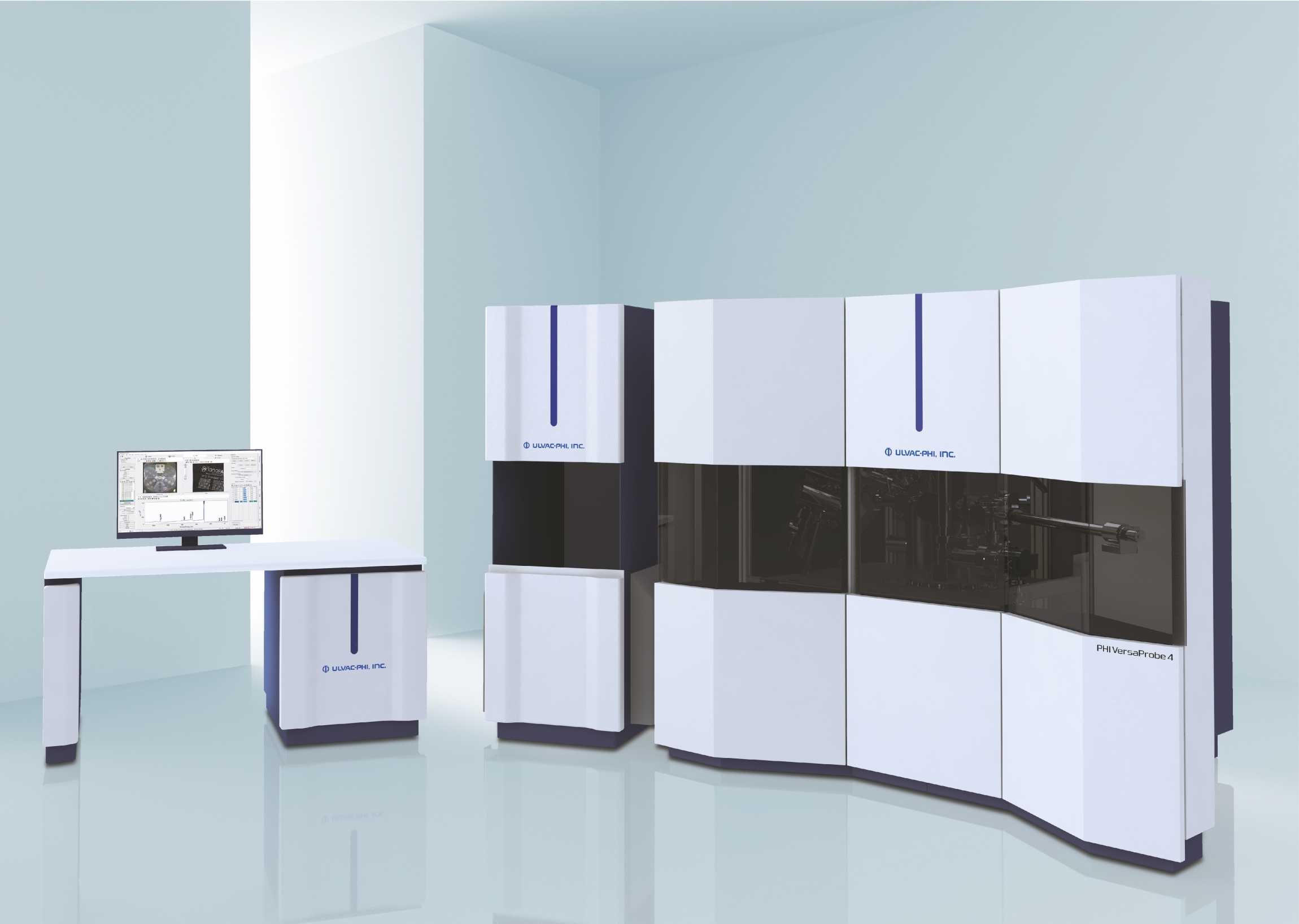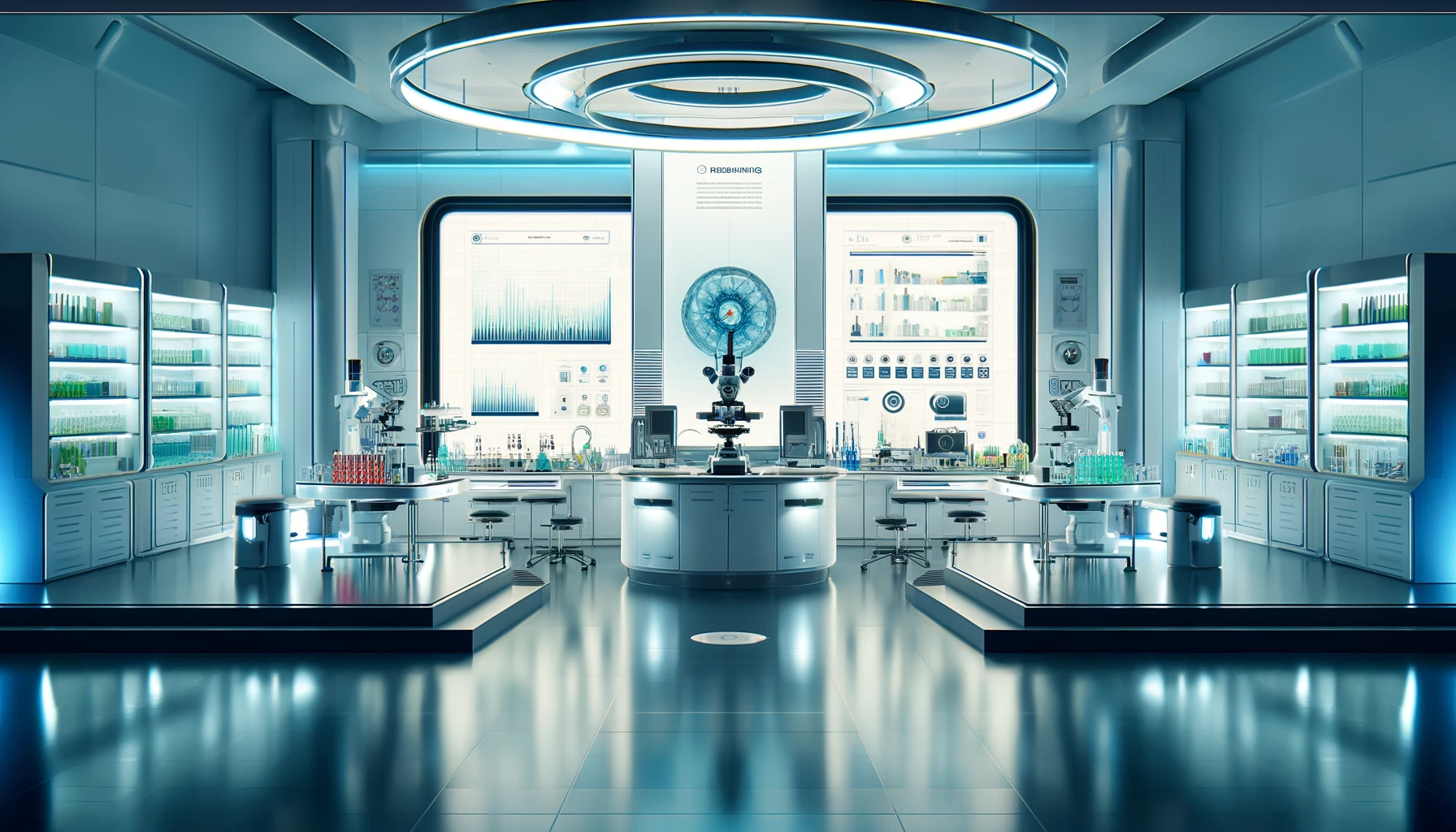Instruments
Overview
The PHI VersaProbe 4 is an advanced X-ray Photoelectron Spectroscopy (XPS) system designed by Physical Electronics (PHI), a subsidiary of ULVAC-PHI, which specializes in surface analysis instruments. The VersaProbe 4 is a highly sophisticated tool tailored for comprehensive surface analysis and is widely used in both research and industrial settings to analyze chemical states, elemental composition, and the electronic states of elements within a material.

Key Features
- Micro-focused X-ray Beam: The VersaProbe 4 utilizes a micro-focused X-ray beam that can be precisely adjusted to target small areas of the sample surface, allowing for detailed and localized chemical analysis. This feature is crucial for materials research, failure analysis, and quality control processes where understanding the surface properties at microscale is necessary.
- Multi-technique Integration: In addition to XPS, the system supports a variety of other surface analysis techniques such as Ultraviolet Photoelectron Spectroscopy (UPS) and reflection electron energy loss spectroscopy (REELS). This multi-technique capability enables a more comprehensive analysis of surface properties, providing insights that go beyond what traditional XPS systems can offer.
- Advanced Imaging Capabilities: Equipped with both secondary electron and backscattered electron detectors, the VersaProbe 4 offers advanced imaging options. These imaging capabilities aid in precisely locating the area of interest for analysis and provide valuable topographic and compositional information about the sample surface.
- Automated and Flexible Operation: The system is designed with user-friendly operation in mind, featuring automated procedures for routine tasks and flexible manual options for custom or experimental analyses. This balance of automation and control makes the VersaProbe 4 suitable for a wide range of users, from experienced researchers to those new to XPS.
- Depth Profiling: The PHI VersaProbe 4 includes ion beam sputtering for depth profiling, allowing researchers to analyze not just the top-most layers of a material but also to explore its in-depth compositional changes. This capability is particularly useful in the study of thin films, coatings, and interfaces.
- Sample Handling and Environment Control: The system accommodates a variety of sample sizes and types, with options for environmental control during analysis. This flexibility ensures that the VersaProbe 4 can be adapted to specific experimental needs, including sensitive or reactive materials.
Specifications
- Detection limits (all elements except H and He): ~ 0.01 monolayer, or ~ 0.1% bulk
- Measurement depth: 10 – 50 Å;
- Spot sizes: 10um – 200 um or 1400 um x 100 um with High Power setting.
- Sample size: Samples must fit a 1″ or 2″ diameter platen; max 5 mm thick.
- Spectrometer: Monochromatized Al(Kα) Source; Vacuum ~ 1.2x10E(-7) Pa



